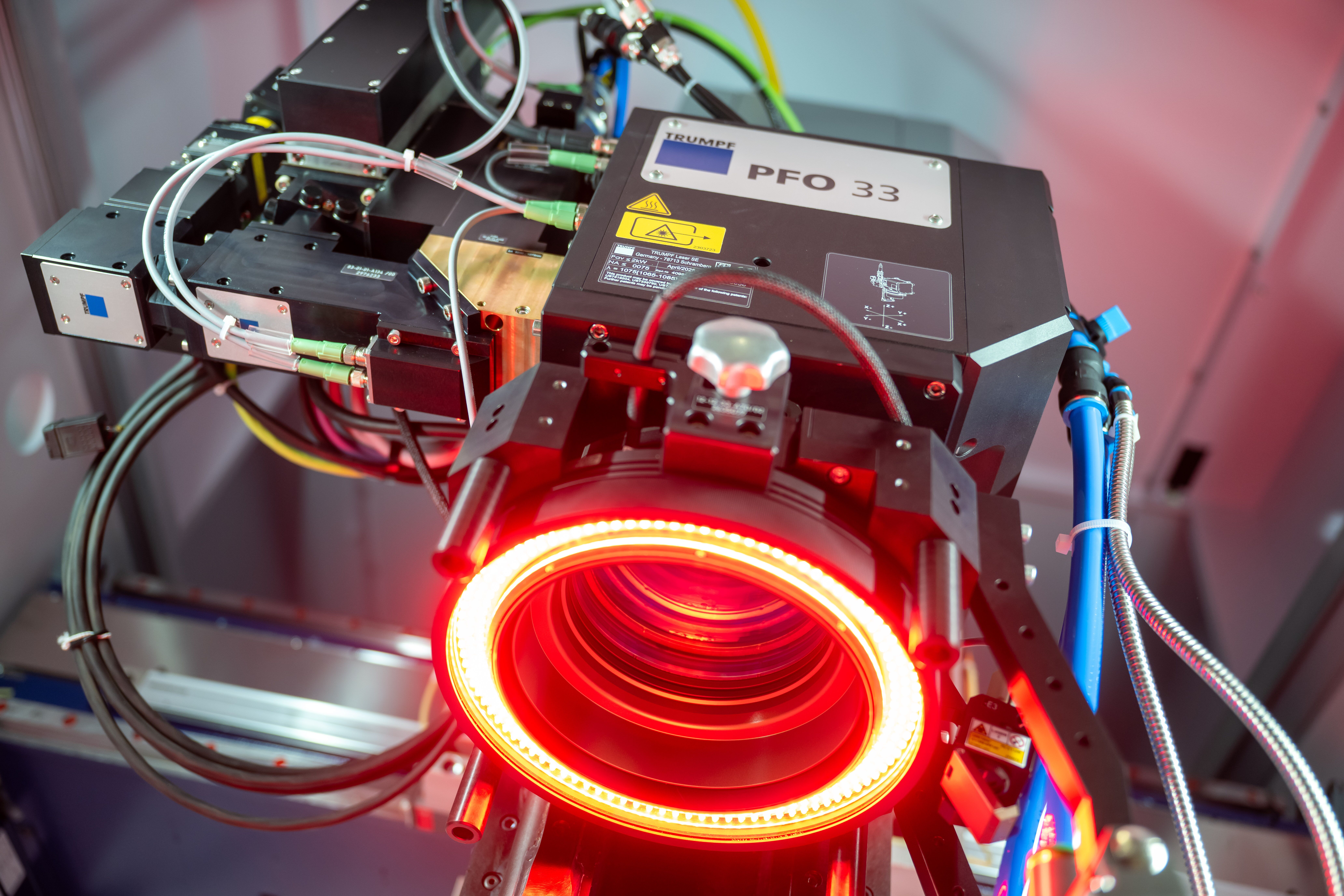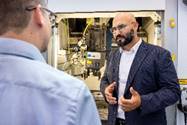
Trumpf says it has developed new laser applications for adhesive and coating preparation in battery production and for corrosion protection of aluminum components. The high-tech company is making electric car batteries safer and protecting cars from rust.
“Selective surface processing with lasers is a clean and fast alternative to chemical processes in the automotive industry, for example, to achieve high adhesive strength for adhesives or coatings,” said Volkan Yavuz, responsible for laser surface processing at Trumpf.

Safe batteries for electric cars
According to the company, Laser technology ensures safe batteries in electric cars. Manufacturers must coat or laminate battery cells before gluing them into battery modules or battery trays. The coating protects against short circuits and environmental influences, thereby increasing the safety and service life of the battery cells.
Before applying the coating and adhesive, manufacturers clean the cells and certain areas of the battery trays with short-pulse lasers. The extremely short light pulses hit the surface of the material without damaging the material itself.
“Our lasers reliably remove oils, rust, oxides, and other residues, and ensure long-term stable adhesion of the coating and adhesive, without the use of aggressive chemicals or mechanical rubbing,” said Yavuz. The lasers can be easily integrated into automated production lines.
Protect aluminum components from rust
The automotive industry increasingly relies on large aluminum castings for car body construction. Yavus said that experts call this mega or gigacasting. During casting, these parts are given a protective layer that protects them from corrosion. However, further processing, such as milling, makes the components susceptible to corrosion, especially when they are later exposed to road salt in winter traffic.
Trumpf has developed a solution for this: the laser homogenizes the surface by selectively remelting a few micrometers and then rapidly quenching it. This makes the aluminum components resistant to corrosion. In tests in which the parts processed in this way were sprayed with salt water for hours, they showed no signs of crevice corrosion.
“This technology is not a dream of the future: it is used not only for gigacasting components, but also for housings for electric motors for electric cars,” said Yavuz.
To process large surfaces, such as aluminum components, users employ the PFO33 scanner optics with a pulsed laser from Trumpf's TruMicro Series 7000. The mirrors of the PFO33 move the laser pulses across the component at speeds of up to several meters per second.
“This enables short cycle times, which are ideal for series production in the automotive industry,” said Yavuz. Local extraction removes smoke, particles, and aerosols that are produced during laser processing and could interfere with the machining process.
Sustainable surface processing
Laser-based surface processing offers significant environmental advantages over conventional methods. The absence of chemicals reduces environmental impact and disposal costs. Contactless processing minimizes tool wear and material waste.
In addition, energy-efficient, targeted laser processing reduces the CO₂ footprint in manufacturing.
Contact Details
Related Glossary Terms
- gang cutting ( milling)
gang cutting ( milling)
Machining with several cutters mounted on a single arbor, generally for simultaneous cutting.
- milling
milling
Machining operation in which metal or other material is removed by applying power to a rotating cutter. In vertical milling, the cutting tool is mounted vertically on the spindle. In horizontal milling, the cutting tool is mounted horizontally, either directly on the spindle or on an arbor. Horizontal milling is further broken down into conventional milling, where the cutter rotates opposite the direction of feed, or “up” into the workpiece; and climb milling, where the cutter rotates in the direction of feed, or “down” into the workpiece. Milling operations include plane or surface milling, endmilling, facemilling, angle milling, form milling and profiling.
- quenching
quenching
Rapid cooling of the workpiece with an air, gas, liquid or solid medium. When applicable, more specific terms should be used to identify the quenching medium, the process and the cooling rate.
